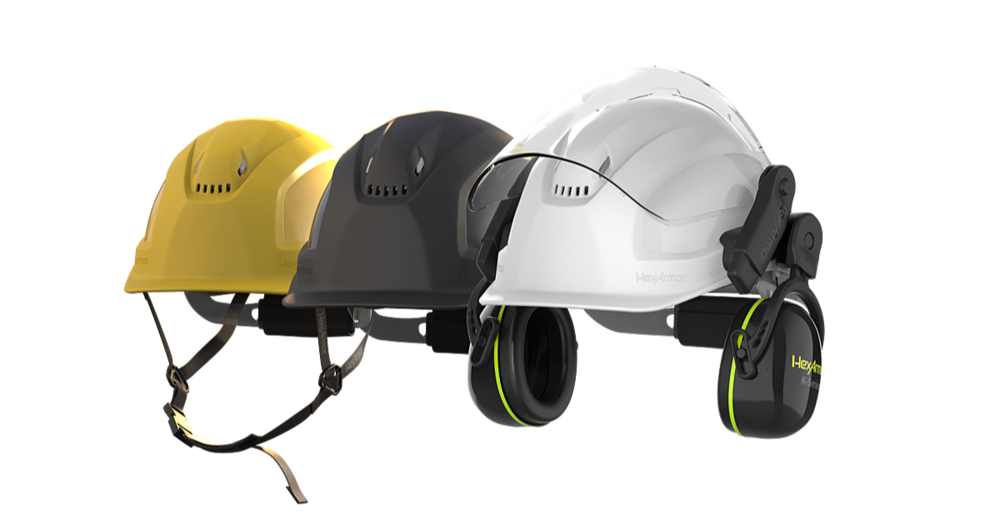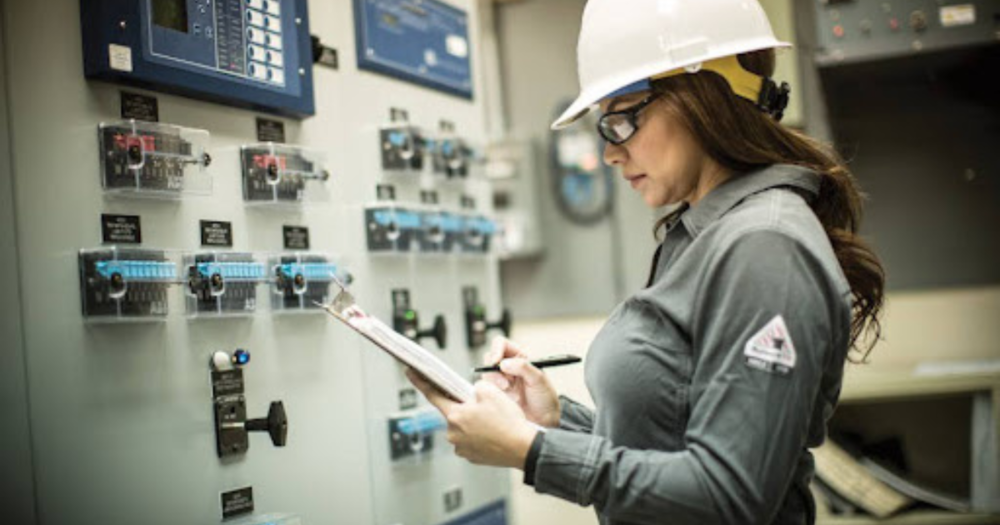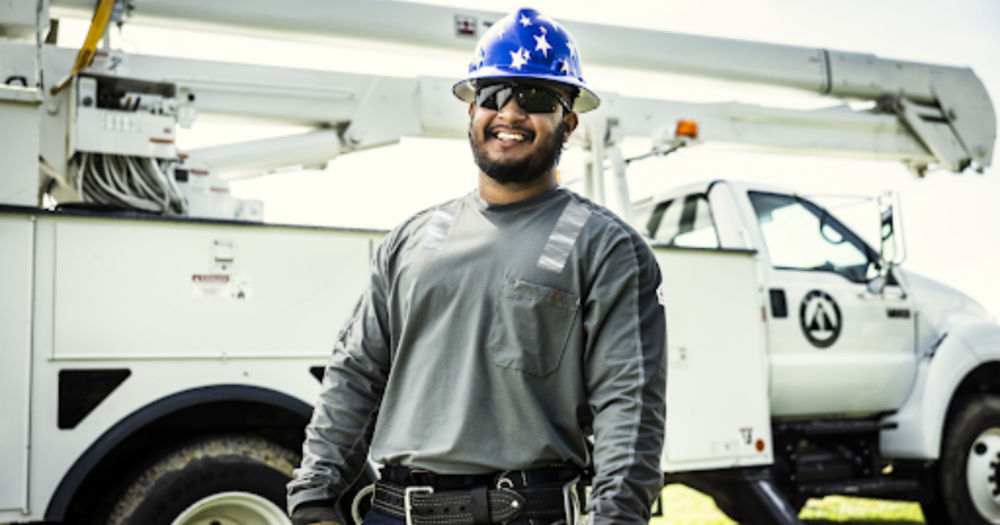
Hard hats are more than just a part of the uniform
on construction sites and in many industries with a significant risk of head injury. These pieces of personal protective equipment (PPE) serve as the first line of defense against various hazards that workers face.
From falling objects and debris to accidental bumps against fixed objects and electrical shocks, hard hats are designed to provide crucial protection for one of the most critical parts of the body: the brain.
To ensure you select the right hard hat for your work environment and provide maximum safety, let’s explore the different hard hat classes, types, and colors.
OSHA Requirements for Hard Hats
The Occupational Safety and Health Administration (
OSHA) sets forth specific standards and requirements for using hard hats in the workplace where there is a potential for injury to the head from falling objects, electrical shocks, and burns.
According to
OSHA standards, hard hats must meet the following general requirements:
- Impact protection: Hard hats must withstand penetration and absorb the shock of a blow by containing a shock-absorbing suspension system.
- Electrical protection: Depending on the class of hard hat, it must protect against electrical hazards.
- Penetration resistance: The hard hat's outer shell must resist penetration by objects.
- Flammability: Hard hats must not burn or melt when exposed to high temperatures.
- Water absorption: Hard hats should not absorb water, ensuring they maintain their protective features in various environmental conditions.
- Secure fit: Hard hats must fit securely on the wearer’s head and be adjustable to ensure comfort and stability.
Hard Hat Classes

The classification of hard hats is a critical aspect of workplace safety that ensures workers are protected against specific hazards they may encounter.
These classifications, established by the American National Standards Institute (
ANSI), categorize hard hats based on their protective capabilities, particularly against impacts, penetration, and electrical shock.
Class E (Electrical)
Class E hard hats are designed specifically for environments where the risk of exposure to high-voltage electrical conductors is significant.
- Offering protection against up to 20,000 volts of electrical shock, these hard hats are critical for electricians and other professionals working in or around power generation, transmission, and distribution.
- Class E hard hats' design and material composition help dissipate electrical charge.
- Given their specialized protection, Class E hard hats are approved by OSHA for use in occupations where electrical insulation is necessary for the safety of workers.
Class G (General)
Class G hard hats, also known as general hard hats, provide a balanced level of protection suitable for a wide range of industries.
- Protecting against impact, penetration, and up to 2,200 volts of electrical shock, Class G hard hats are commonly used in construction, manufacturing, and industrial sectors.
- Their design protects the head from falling objects, debris, and minor electrical shocks.
- Class G hard hats meet OSHA standards for head protection in environments where workers are exposed to physical and electrical hazards, though to a lesser extent than those requiring Class E protection.
Class C (Conductive)
Class C hard hats stand apart from Class E and G due to their lack of electrical protection.
- They’re designed primarily for comfort, ventilation, and protection against impact and penetration.
- Often made from lightweight materials such as aluminum, Class C hard hats are not intended for use in environments where electrical hazards are present but where workers need protection from impact hazards.
- Class C hard hats play a role in safeguarding workers in sectors like telecommunications and certain types of construction, where ventilation and comfort are prioritized and electrical hazards are not a concern.
Discover Class E, G, and C hard hats at Baseline Equipment.
Hard Hat Types
The classification of Type I and Type II hard hats is based on their design and the level of protection they offer. Understanding these two types' differences is essential for selecting the appropriate hard hat for various work environments.
Type I Hard Hats
Type I hard hats are engineered to protect from impacts to the top of the head.
- This design is suitable for environments where objects may fall from above or with a risk of head injuries from vertical impacts.
- Type I hard hats are the traditional choice in many industries where the primary concern is protecting against debris, tools, or materials that may drop onto a worker from heights.
Type II Hard Hats
Type II hard hats, on the other hand, offer a more comprehensive level of protection.
- They are designed to protect against impacts to the head's top and sides. This added protection is crucial in environments where lateral impacts from the side, front, or back are a significant risk.
- These safety helmets are engineered for impact resistance and mitigating the force of blows from various angles, offering head protection in diverse and dynamic work environments.
Explore Baseline Equipment’s Type I and Type II hard hats.
Hard Hat Colors

Color coding in hard hats is critical to maintaining safety and organization on construction sites and
various industrial settings. This system facilitates quick identification of individuals' roles and responsibilities and enhances communication and operational efficiency within the work environment.
- White: Typically reserved for managers, engineers, and foremen, white hard hats signify those in supervisory roles who may need to oversee projects.
- Blue: Blue hard hats are designated for technical professionals such as electricians and carpenters. This color helps identify workers with specialized skills on the job site.
- Green: Green hard hats are often worn by safety inspectors. New or probationary workers may also wear green as a sign of their status.
- Yellow: The most common color, yellow hard hats are used by general laborers. This color denotes individuals involved in various tasks, often related to earthmoving or other labor-intensive activities.
- Red: Red hard hats are typically assigned to fire marshals. This vibrant color stands out, allowing for quick identification in fire emergencies.
- Brown: Brown hard hats are used by welders and those working in high-heat applications. The color signifies exposure to potentially hazardous temperatures and the need for specialized protection.
Hard Hat Expiration Dates and Maintenance
Hard hats are not designed to last indefinitely. Over time, the materials can degrade, reducing the level of protection provided. It's essential to:
- Check for expiration dates: Manufacturers typically recommend a service life for hard hats, often ranging from 3 to 5 years from the date of manufacturer, depending on the model and usage.
- Regular inspections: Inspect hard hats for signs of damage, such as cracks, dents, or significant wear, that could compromise protection.
- Maintenance: Follow manufacturer guidelines for cleaning and maintaining hard hats. Proper maintenance can extend the life of the hard hat and ensure it provides the intended level of protection.
Elevating Safety Standards with Hard Hats

Whether you're a site manager overseeing a construction project or a worker on the front lines, understanding the importance of selecting the right hard hat, recognizing its role in workplace safety, and maintaining its condition are crucial steps in ensuring the well-being of workers across industries.
Dive into the details of hard hat classifications, styles, and color codes to select the best head protection for safety in any workplace environment.


